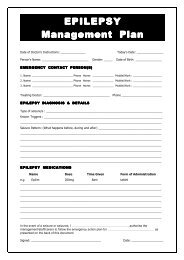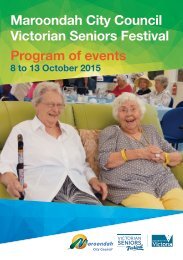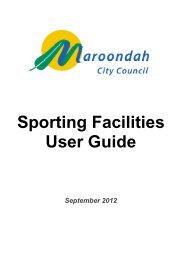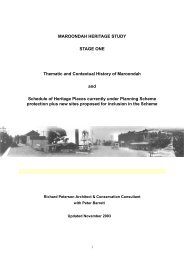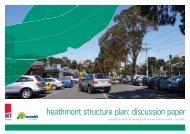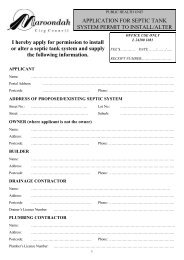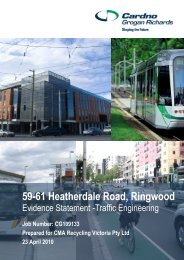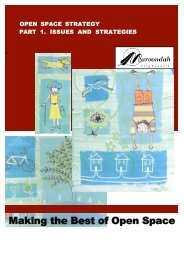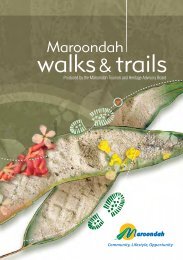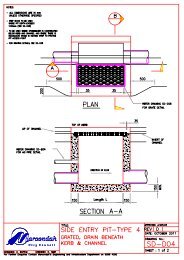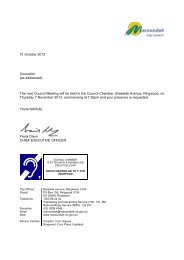MAROONDAH INTEGRATED TRANSPORT STRATEGY
Maroondah Integrated Transport Strategy - Maroondah City Council
Maroondah Integrated Transport Strategy - Maroondah City Council
Create successful ePaper yourself
Turn your PDF publications into a flip-book with our unique Google optimized e-Paper software.
4.5 Public Transport Needs in MaroondahAustralian Bureau of Statistics 2001 Census data has been used to identify the locationof population groups with characteristics generally associated with the need to travelby public transport and to make comparisons with the public transport servicescurrently provided.Population areas with demographic characteristics associated with substantial need forpublic transport are those areas having high proportions of one or more of thefollowing characteristics:• Households with no cars,• People aged 65 years and over, and• Children below driving age.Groups in the community with these characteristics tend to:• travel more in the off-peak periods;• undertake shorter than average trips; and• use public transport, taxis, walk and bicycle modes.Community groups with the greatest public transport needs were identified byexamining the population characteristics data from the 2001 Census at census collectordistrict (ccd) level. The analysis found the areas within Maroondah, associated withhigh levels of the three factors listed above, are as follows:Households with No CarsLargest areas with a high percentage of households without cars are situated aroundRingwood and Croydon railway stations with significant areas along MaroondahHighway between Ringwood and Croydon.Other significant areas are around Ringwood East railway station and along theRingwood to Belgrave rail line.Isolated pockets also exist along Canterbury Road between Dorset Road andBayswater Road and along the north side of Lincoln Road. These areas are highlightedin Figure 4.2.65 Years and OverLargest percentage of population aged 65 years or over are situated in the areas aroundRingwood, Ringwood East and Croydon rail stations. There are also significant areassouth and east of Heathmont rail station.Isolated pockets exist north of Maroondah Highway in Croydon North and north ofOban Road in Ringwood North. These areas are shown in Figure 4.3.18 Years and UnderThe areas with the largest percentage of population aged 18 years and under aresituated in the north west and the south east corners of the municipality. There is also asignificant area north of Canterbury Road and west of Bayswater Road.Isolated pockets exist at the corner of Glenvale Road and Oban Road, south of LincolnRoad east of Dorset Road and west of Heathmont rail station. These areas are shownin Figure 4.4.24



